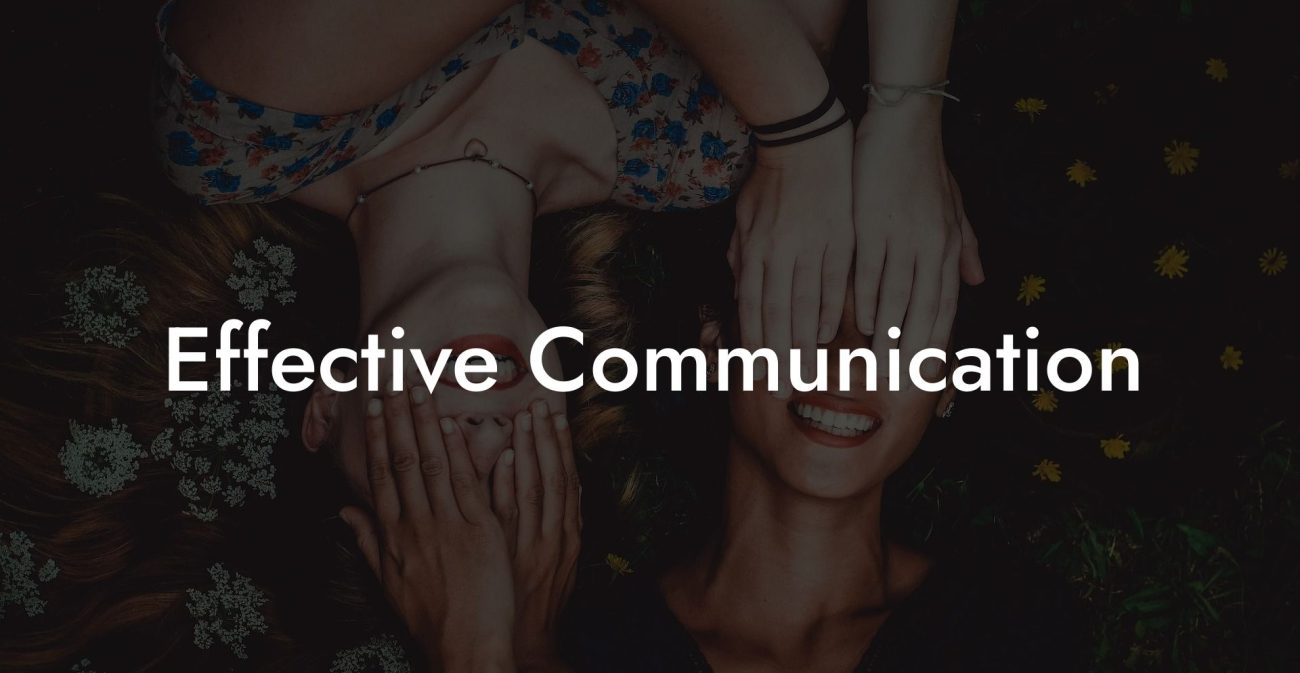Consent

Imagine a world where every “yes” is a celebration of mutual respect, every pause a moment of self-empowerment, and every interaction becomes a testament to the beauty of human autonomy. Welcome to the transformative realm of consent, a guiding principle that empowers you to communicate your boundaries, honor those of others, and create relationships that are rooted in clarity and respect. In this comprehensive guide to Consent, we’ll explore its definition, its significance across different types of relationships (from romantic and sexual to professional and everyday interactions), and practical strategies for embedding consent into your life. Whether you’re navigating intimate partnerships or fostering a respectful community, understanding and practicing consent is the cornerstone of authentic, ethical connection.
Quick Links to Useful Sections
- Understanding Consent: Definition and Meaning
- What Is Consent?
- The Evolution of the Concept of Consent
- The Importance of Consent in Relationships and Daily Life
- Empowerment and Autonomy
- Building trust and Safety
- Preventing Misunderstandings and Conflict
- Types of Consent
- Verbal Consent
- Non-Verbal Consent
- Informed Consent
- Ongoing Consent
- Implementing Consent in Traditional Monogamy
- Communication in One-on-One Relationships
- Practical Strategies for Maintaining Consent
- Implementing Consent in Ethical Non-Monogamy
- Complexities of Multi-Partner Dynamics
- Strategies for Managing Consent in Multi-Partner Relationships
- Overcoming Barriers to Consent
- Addressing Miscommunication and Assumptions
- Challenging Cultural Norms and Myths
- Empowering Yourself and Others
- Real-Life Examples and Case Studies
- Case Study: Emma and Liam’s Journey to Clarity
- Case Study: The Polyamorous Circle
- Expert Insights on Consent
- FAQ: Your Consent Questions Answered
Understanding Consent: Definition and Meaning
What Is Consent?
Consent is the clear, affirmative, and voluntary agreement between parties to engage in a specific activity. It is the process by which individuals communicate their willingness or unwillingness to participate in any interaction, be it physical, emotional, or digital. At its core, consent is about respecting individual autonomy and ensuring that every interaction is grounded in mutual understanding. This principle applies universally, from everyday decisions like sharing personal information to intimate acts such as sexual activity.
In practice, consent is expressed through both verbal and non-verbal communication, and it must be given freely, without coercion or manipulation. It’s important to remember that consent can be withdrawn at any time, and what was agreed upon in one moment may change as feelings or circumstances evolve. In this sense, consent is not a one-time checkbox but an ongoing, dynamic process.
The Evolution of the Concept of Consent
Historically, consent was often assumed or overlooked in many social and sexual contexts. Over time, through the influence of social justice movements, feminist theory, and increasing awareness of personal rights, the concept of consent has evolved into a critical component of ethical interactions. Today, consent is not only a legal requirement in many contexts but also a moral imperative that supports the dignity and autonomy of every individual.
The modern discourse on consent emphasizes the importance of communication, continuous reaffirmation, and a deep respect for individual boundaries. This evolution has redefined how we approach relationships and interactions, ensuring that everyone’s voice is heard and honored.
The Importance of Consent in Relationships and Daily Life
Empowerment and Autonomy
Consent is fundamentally empowering, it gives you the power to decide what happens to your body and mind. When you practice consent, you assert your right to self-determination and encourage others to do the same. This mutual empowerment fosters relationships that are not only healthy and respectful but also deeply transformative. Whether in a romantic, sexual, or professional context, the ability to express and honor consent creates an environment where everyone feels valued.
By centering consent in your interactions, you contribute to a culture that prioritizes personal autonomy, helping to dismantle harmful power dynamics and promote equality.
Building trust and Safety
Consent is the cornerstone of trust in any relationship. When each party communicates their boundaries clearly and listens to the needs of the other, it establishes a foundation of safety and respect. This is particularly important in intimate relationships, where vulnerability is essential. Knowing that your partner respects your limits fosters a sense of security, enabling you to open up emotionally and share more deeply.
In everyday interactions, consent creates a respectful space where individuals feel safe expressing themselves, leading to more authentic and meaningful connections.
Preventing Misunderstandings and Conflict
Clear, affirmative consent reduces the likelihood of misunderstandings and conflicts. When expectations are communicated openly, both parties know exactly what is acceptable and what is not. This clarity minimizes the risk of hurt feelings or unintentional harm, ensuring that all interactions proceed with mutual understanding and respect.
In conflict resolution, revisiting the principle of consent can help reset conversations, allowing for the renegotiation of boundaries and the healing of past misunderstandings.
Types of Consent
Verbal Consent
Verbal consent is the most explicit form of agreement. It involves clear, spoken communication where each party articulates their willingness to engage in a particular activity. Phrases like “Yes, I’m comfortable with this,” or “I consent to…” are straightforward examples of verbal consent. This type of consent is especially important in intimate and sexual encounters, where clarity is paramount.
Verbal consent not only confirms that both parties are on the same page at that moment but also serves as a reminder that consent must be ongoing and can be renegotiated as circumstances change.
Non-Verbal Consent
Non-verbal consent involves body language, facial expressions, and other cues that indicate willingness or discomfort. A smile, a nod, or a gentle touch can all signal consent in a context where verbal communication is not always possible. However, non-verbal cues must be interpreted carefully; they are most effective when paired with clear, verbal communication to avoid ambiguity.
Understanding and respecting non-verbal signals is essential, especially in fast-paced or spontaneous interactions.
Informed Consent
Informed consent means that all parties have a clear understanding of what they are agreeing to, including any potential risks or implications. This concept is crucial in contexts ranging from medical procedures to intimate encounters, ensuring that decisions are made with full awareness and without coercion.
In relationships, informed consent involves discussing boundaries, expectations, and any potential consequences of an action, thereby creating an atmosphere of transparency and respect.
Ongoing Consent
Consent is not a one-time event, it’s an ongoing process. Ongoing consent means that at every stage of an interaction, all parties have the opportunity to confirm, modify, or withdraw their agreement. This is particularly important in long-term relationships, where circumstances and feelings can change over time.
Regularly checking in with your partner(s) ensures that consent remains valid and that any shifts in comfort or desire are addressed promptly.
Implementing Consent in Traditional Monogamy
Communication in One-on-One Relationships
In traditional monogamous relationships, consent is often embedded in daily interactions. From sharing a gentle touch to discussing intimate details, consent is woven into the fabric of the relationship. The key is to cultivate an environment where both partners feel safe and empowered to express their needs at any time.
Regular, open conversations about what makes each person comfortable and secure in the relationship help reinforce the principle of consent. Whether it’s setting expectations for physical intimacy or discussing personal boundaries, these ongoing dialogues build trust and prevent misunderstandings.
Practical Strategies for Maintaining Consent
To ensure ongoing consent in a monogamous relationship:
- Regular Check-Ins: Schedule daily or weekly conversations where both partners can express their current feelings and any changes in their comfort levels.
- Open Dialogue: Use “I” statements to communicate your needs, and encourage your partner to do the same.
- Active Listening: Practice listening without interrupting and reflect back what you hear to ensure understanding.
- Reaffirm Consent: In moments of intimacy, ask for verbal or non-verbal confirmation that your partner is comfortable with the progression of the interaction.
Implementing Consent in Ethical Non-Monogamy
Complexities of Multi-Partner Dynamics
In ethical non-monogamous relationships, consent takes on additional layers of complexity. With multiple partners involved, it is vital to ensure that everyone is fully aware of and agrees to the relationship dynamics at play. This requires clear, transparent communication not only within individual dyads but also in group settings.
For example, when engaging in group activities or deciding on time allocations among various partners, all parties must have the opportunity to voice their comfort levels and negotiate boundaries. This continuous dialogue helps maintain trust and ensures that consent is upheld across the entire network.
Strategies for Managing Consent in Multi-Partner Relationships
Effective strategies include:
- Group Check-Ins: Hold regular meetings with all involved partners to discuss the state of the relationships and ensure that everyone’s needs are being met.
- Individual Conversations: In addition to group discussions, maintain one-on-one conversations to address more personal or sensitive topics.
- Transparent Communication Channels: Use digital tools like group chats, shared calendars, and relationship management apps to facilitate continuous, clear communication.
- Clear Documentation: Consider creating a shared document that outlines agreed-upon boundaries, expectations, and protocols for ongoing consent.
Overcoming Barriers to Consent
Addressing Miscommunication and Assumptions
One of the most common barriers to effective consent is miscommunication. Assumptions about what the other person wants or expects can lead to situations where consent is not explicitly given. Overcoming this barrier requires a commitment to clarity and a willingness to ask questions.
For example, if you’re uncertain whether your partner is comfortable with an intimate act, it’s better to ask directly than to assume. This not only prevents misunderstandings but also reinforces a culture of respect and honesty.
Challenging Cultural Norms and Myths
Cultural narratives around romance and intimacy can sometimes obscure the true meaning of consent. Myths such as “silence means consent” or the belief that consent is implied by past behavior must be actively challenged. Educating yourself and others about the importance of explicit, ongoing consent is key to dismantling these harmful assumptions.
Engaging in conversations about consent in everyday situations, whether at work, in social settings, or within personal relationships, can help shift cultural perceptions and promote a more respectful environment.
Empowering Yourself and Others
True empowerment comes from understanding and asserting your own boundaries. By practicing and promoting clear consent, you not only protect your well-being but also set a positive example for others. This empowerment creates a ripple effect that can transform interpersonal dynamics and contribute to a culture where every individual feels valued and heard.
Remember, consent is a shared responsibility, each person has the power and duty to ensure that every interaction is mutually respectful and fulfilling.
Real-Life Examples and Case Studies
Case Study: Emma and Liam’s Journey to Clarity
Emma and Liam, a long-term monogamous couple, attribute the success of their relationship to continuous, open communication about consent. They established daily check-ins and made it a habit to ask for explicit consent before progressing physically. This practice not only deepened their trust but also helped them navigate moments of uncertainty with empathy and care. Their story is a powerful reminder that consent is not a one-time event, but an ongoing dialogue that nurtures a secure and loving partnership.
Case Study: The Polyamorous Circle
In a polyamorous network consisting of three partners, Jordan, Casey, and Alex, regular group meetings have been pivotal in maintaining clear consent and managing boundaries. They hold monthly sessions where each partner shares their current feelings, discusses any shifts in their comfort levels, and negotiates any necessary changes. This structured approach has minimized misunderstandings and built a resilient framework that supports their dynamic, multi-partner relationships.
Their experience demonstrates that, even in the complexity of non-monogamous relationships, clear communication about consent is the key to creating harmonious and fulfilling connections.
Expert Insights on Consent
Experts in relationship dynamics consistently emphasize that consent is the bedrock of healthy, respectful interactions. Dr. Elena Rivera, a therapist specializing in intimate relationships, explains, “Consent is the ongoing, active process of ensuring that all parties are comfortable and willing. It’s not just about saying ‘yes’, it’s about maintaining an environment of trust and mutual respect.”
Relationship coach Marcus Lee adds, “Effective consent is a conversation. It requires that everyone involved feels empowered to express their boundaries and that those boundaries are met with understanding and care. When practiced consistently, consent can transform relationships by creating a culture of openness and respect.”
FAQ: Your Consent Questions Answered
1. What is consent?
Consent is the clear, affirmative, and voluntary agreement between parties to engage in a specific activity. It involves ongoing, explicit communication where all parties agree to the terms of interaction.
2. Why is consent important in relationships?
Consent ensures that every interaction is respectful, safe, and mutually agreed upon. It builds trust, promotes autonomy, and prevents misunderstandings, thereby fostering healthy and ethical relationships.
3. How is consent expressed?
Consent can be expressed verbally through clear statements like “Yes, I’m comfortable with this,” or non-verbally through positive body language. However, verbal consent is the most explicit and reliable form.
4. Is consent a one-time thing?
No, consent is an ongoing process. It must be actively maintained and can be withdrawn at any time. Continuous check-ins are essential to ensure that everyone remains comfortable with the interaction.
5. What is informed consent?
Informed consent means that all parties understand what they are agreeing to, including any potential risks or implications, before giving their agreement.
6. How can I ensure ongoing consent in a long-term relationship?
Establish regular check-ins, use clear communication techniques like “I” statements, and create a safe space for open dialogue where each partner can express their needs and boundaries.
7. How does consent work in ethical non-monogamy?
In ethical non-monogamy, consent is maintained both in individual relationships and within the broader network. Regular group and one-on-one check-ins ensure that all partners are informed and comfortable with the relationship dynamics.
8. What are some common misconceptions about consent?
A common misconception is that silence or past behavior implies consent. In reality, consent must be explicitly given and can change over time. It’s not a one-time agreement, but a continuous dialogue.
9. How do I handle a situation where consent is withdrawn?
If consent is withdrawn at any point, it’s important to immediately stop the activity and have an open discussion to understand the reasons behind the change. Respecting a partner’s decision without pressure is essential.
10. Where can I find more resources on consent?
Look for books like "Nonviolent Communication" by Marshall Rosenberg, podcasts such as “Where Should We Begin?” by Esther Perel, and online courses or workshops that focus on communication and consent. Additionally, many online communities and blogs offer practical advice and personal stories about consent in various contexts.
Resources and Community Support: Your Next Steps in Embracing Consent
- Books: Read "Nonviolent Communication" by Marshall Rosenberg for techniques on compassionate dialogue and consent.
- Podcasts: Listen to relationship podcasts like "Where Should We Begin?" by Esther Perel to gain insights on effective communication and consent.
- Online Courses: Enroll in workshops or webinars that focus on consent, communication, and healthy relationship dynamics.
- Digital Tools: Use apps like shared calendars and digital journals to track and coordinate consent and communication in your interactions.
- Therapy and Counseling: Seek guidance from professionals experienced in relationship dynamics to help you navigate and reinforce the practice of ongoing consent.
- Community Groups: Engage with online forums and local meet-ups focused on consent and ethical relationships to share experiences and learn from others.
Embracing consent means embracing a culture of respect, self-awareness, and continuous communication. With these strategies and resources at your fingertips, you can build relationships that honor every individual's autonomy and create a foundation of trust and empowerment.
Lost & confused by all of the terms, types and seemingly made up 3 letter acronyms?? We've got you. Check out our Ethnical Non-Monogamy Dictionary >>
Useful Interruption: Not sure which relationship vibe fits you best? Take our Relationship Test, it’ll give you the real insight into your natural relationship style. Then, dive into our binge-worthy guides (from the tried-and-true to the “wait, that’s a thing?”) and find the perfect relationship type for your life:
- Monogamy
- Open Relationships
- Ethical Non-Monogamy
- Solo Polyamory
- Non-Hierarchical Polyamory
- Hierarchical Polyamory
- Relationship Anarchy
- Swinging
Now back to the main article but yeah take the test...



